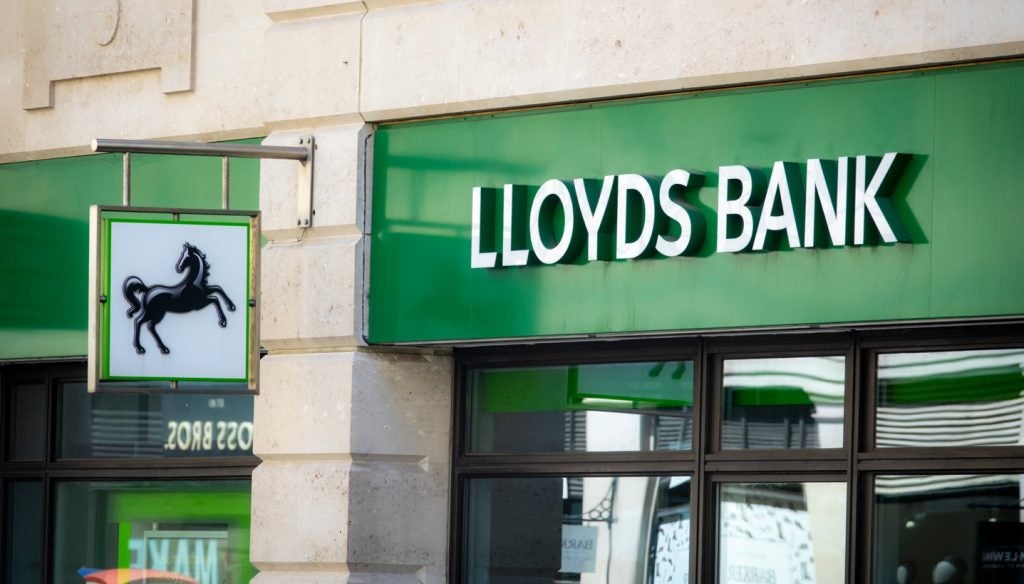The launch of seven day switching, the introduction of Help to Buy, 95% mortgages and the split of Lloyds and TSB and their subsequent rebrands, have all caused a stir in the UK banking industry. The Lloyds and TSB rebrands in particular threw up questions about the future of the high street bank. Valentina Romeo meets one of the agencies behind the re-branding to learn more about the process and what’s in store.
Bank brands today are continually evolving, and this is only partly due to the huge growth in digital banking.
Customers’ lives and attitudes have changed markedly and, as a consequence, so too have consumers’ expectations of banking services. The ambitious transformation of Lloyds Banking Group needed to take all of these changes into account as well as the significant shifts within the financial services market in recent years. This is where creative engagement agency Rufus Leonard was able to add real value. As Freddie Baveystock, strategy director at Rufus Leonard tells RBI: "We have never been just a branding company or a digital agency, but a fusion of the two. This has given us a particular ability to transform and manage brands in the digital age – we call it Active Brand Management (ABM)."
By applying the principles of ABM it took an impressively short 18 months for the agency to develop the strategy to re-shape Lloyds Bank and create a new identity for the brand. Considering the fact that Lloyds TSB was the UK’s largest retail bank, with a market share of 30% and 30m customers, and the process needed to cover both the business strategy and the brand identity this was no mean feat, especially given consumer trust in the sector. As Baveystock explains: "Thinking about the backdrop of the financial crisis, this is a brand that really wants to re-establish trust in the opinion of its customers. Returning the core organisation to sit under the Lloyds Bank name was a very powerful gesture."
Symbolism and relevance
Prior to the acquisition of TSB back in the 90s, Lloyds was a solid brand. The merger with TSB – one of the biggest the UK has ever seen, was well received and delivered strong returns for the brand. With the re-brand to Lloyds Bank, the bank was looking to achieve a similar result. It was imperative therefore that the re-brand wasn’t seen as just a name change. All of the templates, systems, and literature had to change. As Baveystock comments: "Changing every touchpoint was a great way to say to consumers ‘we’ve moved and listened, we have changed and adapted."
How well do you really know your competitors?
Access the most comprehensive Company Profiles on the market, powered by GlobalData. Save hours of research. Gain competitive edge.

Thank you!
Your download email will arrive shortly
Not ready to buy yet? Download a free sample
We are confident about the unique quality of our Company Profiles. However, we want you to make the most beneficial decision for your business, so we offer a free sample that you can download by submitting the below form
By GlobalDataBaveystock continues: "Banks developing during the 90s and early years of this century had become quite sales oriented.
"Customers noticed that, and most of them tolerated it because the economy was buoyant. However, as soon as the economy changed, then people wanted to see a change too. They wanted the body language of the bank to change and be more service orientated."
Creative director James Ramsden adds: " Research showed that customers wanted something that felt continuous, but different. Something that re-captured the sense of who Lloyds is. To achieve this we worked on creating elements that reflected the heritage of Lloyds Bank, a brand that has been in our lives for generations but brought the brand up-to-date. For example, we modernised the iconic black horse for the digital age, sourced an enormous range of emotive imagery that reflects the reality of customers’ lives and created a tone of voice that feels like ‘a breath of fresh air.’"
According to the consultants, a key aim of all the comms was to re-assure customers that it was changing and fundamentally returning to much more traditional service values without losing touch with the evolving environment.
"Generally speaking, most branding campaings are looking for five maybe seven years out of an idea, but that is not relevant anymore, because the world moves too fast," Ramsden says.
"Relevance is a combination of things," Baveystock adds. "With banking, it has to connect with something that is fundamental to people’s values and believes. If you are not relevant you simply can’t connect with them in that way, you are just being a utility provider."
Quality and quantity
Getting a proposition to resonate with consumers and a new brand was just the first step for Lloyds Bank. A project of this scale involves all aspects of the business, encompasses a revamped in-branch experience with new fascias, staff uniforms and marketing literature as well as internal communications material. For these and more reasons , Rufus Leonard faced massive challenges throughout the project. These included everything from crafting and animating the iconic black horse for use in thousands of instances, to designing various debit and credit cards, developing mobile interfaces, refreshing the look and feel of the website and the design and delivery of hundreds of brochures ahead of the Lloyds Bank re-launch.
"Scale was one of the biggest challenges," says Baveystock, "The simple level of project management required both by us and the client to keep a project of that size on track was enormous."
The other challenge was to engage the appetite of most customers for change. As Baveystock says: "We had to make sure we were courageous enough. This is a bank that has had a very distinctive history and role to play. So, the key challenge was to make sure we went far enough, even if this is a time where cynicism about banks is still very high."
Looking ahead
The re-brand of Lloyds Bank and consumer response to date is encouraging for the sector as a whole, particularly when it comes to banks’ place on the high street. Ramsden says that he believes branches will continue to play an active role in the future, although that role is "fundamentally changing."
Ramsden continues: "The choices available across the various banking groups mean that consumers will always be able to interact with a brand that fits into their life rather than vice versa. Banks, therefore need to focus on what consumers need rather than what they were always there for in the past. Do this and no matter how staggering the pace of change in the industry, the banks will be in the driving seat and their customers will be engaged. In this day and age that is all a bank should be aiming for."







